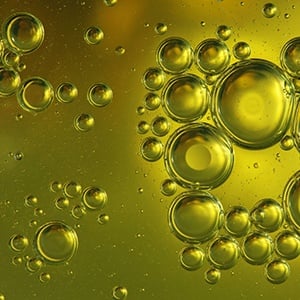
Emulsions are a class of molecules that comprise many of the products we use on a daily basis. From pharmaceutical creams to mayonnaise to metal working cutting fluids, some of the conveniences we enjoy (both aesthetic and functional) would not be for without the existence of emulsions. Emulsification can be achieved through a number of methods, with homogenization being the most common; however, the process can be altered in both the homogenizing process and the mixture’s chemical composition. Keep reading for specific tips that will help your laboratory create a better emulsion.
- Decrease the droplet size of dispersed phase
Aside from its biochemical composition, particle size has perhaps the biggest influence on a product’s function. Multiple studies have shown that smaller particle sizes enhance product effectiveness. For example, among pharmaceutical products, this translates to increased bioavailability, and food and beverage products see enhanced appearance and extended shelf life. High-pressure homogenization in particular has the ability to reduce particle size to levels that are not achievable by most other mixing processes.
- Increase the amount of force imparted
This relates to the above point, as an increase in force during mixing will help to reduce particle size. Increased force also, however, creates an emulsion that is much more well-mixed. This is significant in that it enhances the product’s stability, which lengthens its shelf and overall consumer satisfaction. Shear, cavitation, turbulence, and pressure are among some of the more common forces used to mix an emulsion. (1)
- Increase viscosity of the continuous phase
Because of the immiscible properties of the two phases that comprise an emulsion, finding ways to stabilize them once mixed is critical to the product’s stability. Specifically regarding the continuous phase, viscosity refers to its thickness. By increasing the viscosity of the continuous phase, the dispersed droplets have a more difficult time finding each other and recombining. Laboratories that produce emulsions can purchase emulsifiers/thickeners, which are comprised of a hydrophilic head and hydrophobic tail. They work to improve the product’s viscosity, contributing to its overall stability. (2)
Pion: Equipment For Emulsion Production
As you either embark on or continue along the process of producing emulsions, your product’s success may depend on the equipment used to make it. High pressure homogenization is the most common method for producing emulsions, because of both its powerful mixing process and its cost/time effectiveness. The homogenizer will shear fluid by forcing it through a restrictive valve, forming a an emulsion with decreased particle size. Pion's BEE brand technology is trusted by lab managers and scientists around the world for their high-pressure homogenizers. They offer homogenizers that are both high-quality and reliable, and which can help your lab produce nano/micro emulsions, dispersions, and suspensions to be incorporated into your pharmaceutical cream. Visit our high pressure homogenizers to learn more about our products.

